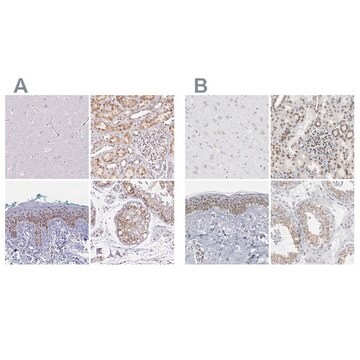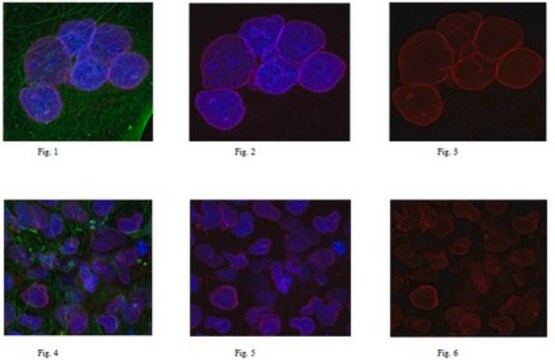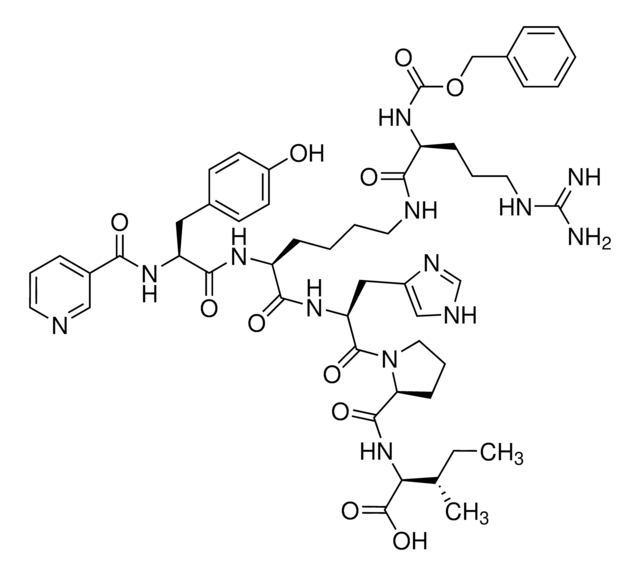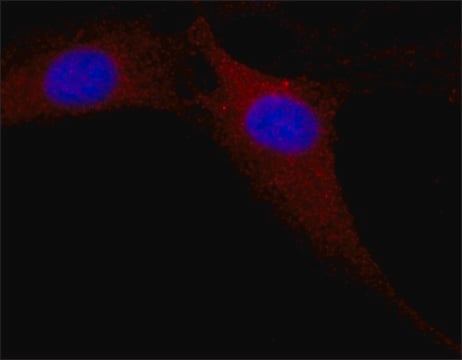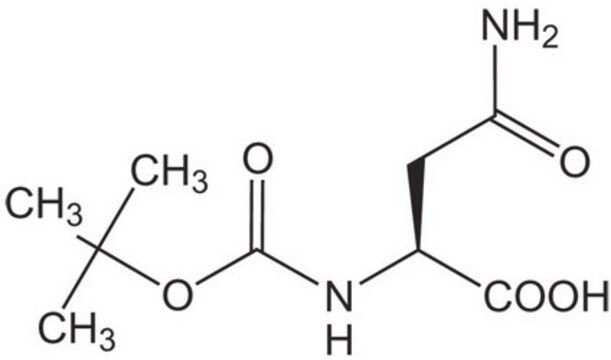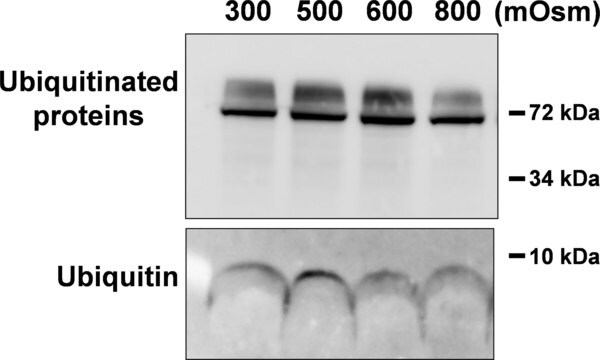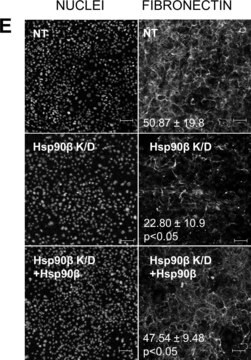ABN2288
Anti-Nesprin-2/SYNE2
Synonim(y):
KASH domain-containing protein 2, KASH2, Nuclear envelope spectrin repeat protein 2, Nucleus and actin connecting element protein, Protein NUANCE, Synaptic nuclear envelope protein 2, Syne-2
About This Item
WB
western blot: suitable
Polecane produkty
pochodzenie biologiczne
rabbit
Poziom jakości
forma przeciwciała
purified antibody
rodzaj przeciwciała
primary antibodies
klon
N/A, polyclonal
masa cząsteczkowa
calculated mol wt 782.75 kDa
observed mol wt ~135 kDa
reaktywność gatunkowa
mouse
reaktywność gatunkowa (przewidywana na podstawie homologii)
canine
opakowanie
antibody small pack of 100 μL
metody
immunocytochemistry: suitable
western blot: suitable
izotyp
IgG
sekwencja epitopowa
N-terminal
numer dostępu Protein ID
numer dostępu UniProt
temp. przechowywania
-10 to -25°C
informacje o genach
mouse ... Syne2(319565)
Opis ogólny
Specyficzność
Immunogen
Zastosowanie
Evaluated by Immunocytochemistry in NIH3T3 cells.
Immunocytochemistry Analysis: A 1:1,000 dilution of this antibody detected Nesprin-2/SYNE2 in NIH3T3 cells.
Tested applications
Western Blotting Analysis: A representative lot detected Nesprin-2/SYNE2 in Western Blotting application (Luxton, G.W., et. al. (2010). Science. 329(5994); 956-9).
Western Blotting Analysis: A 1:1,000 dilution from a representative lot detected Nesprin-2/SYNE2 in NIH-3T3 overexpressing Nesprin-2.
Immunocytochemistry Analysis: A representative lot detected Nesprin-2/SYNE2 in immunocytochemistry application (Zhang, Q., et. al. (2019). Curr Biol. 29(17); 2826-2839).
Note: Actual optimal working dilutions must be determined by end user as specimens, and experimental conditions may vary with the end user.
Postać fizyczna
Przechowywanie i stabilność
Inne uwagi
Oświadczenie o zrzeczeniu się odpowiedzialności
Nie możesz znaleźć właściwego produktu?
Wypróbuj nasz Narzędzie selektora produktów.
Kod klasy składowania
11 - Combustible Solids
Klasa zagrożenia wodnego (WGK)
WGK 1
Temperatura zapłonu (°F)
Not applicable
Temperatura zapłonu (°C)
Not applicable
Certyfikaty analizy (CoA)
Poszukaj Certyfikaty analizy (CoA), wpisując numer partii/serii produktów. Numery serii i partii można znaleźć na etykiecie produktu po słowach „seria” lub „partia”.
Masz już ten produkt?
Dokumenty związane z niedawno zakupionymi produktami zostały zamieszczone w Bibliotece dokumentów.
Nasz zespół naukowców ma doświadczenie we wszystkich obszarach badań, w tym w naukach przyrodniczych, materiałoznawstwie, syntezie chemicznej, chromatografii, analityce i wielu innych dziedzinach.
Skontaktuj się z zespołem ds. pomocy technicznej